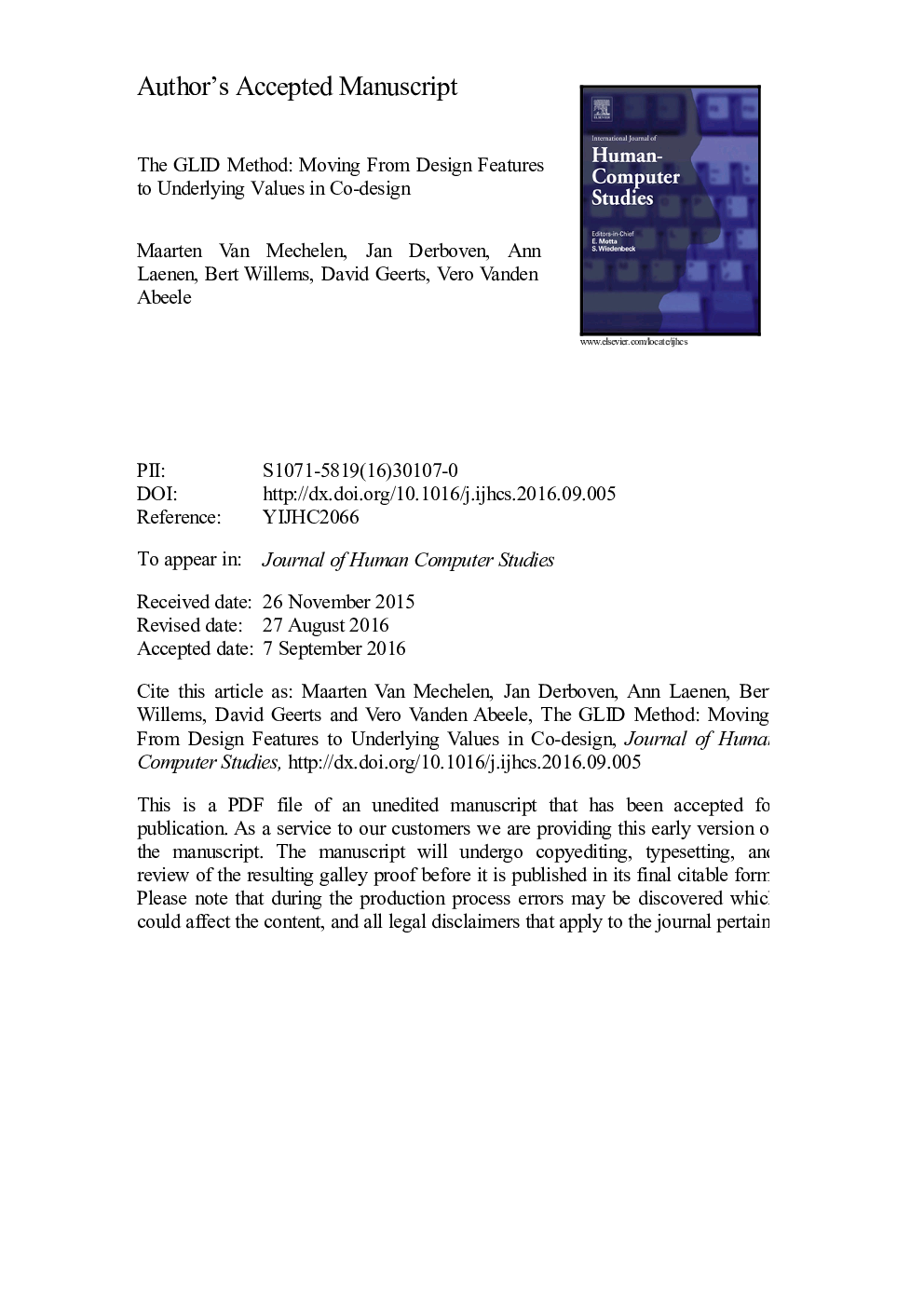| Article ID | Journal | Published Year | Pages | File Type |
|---|---|---|---|---|
| 4945873 | International Journal of Human-Computer Studies | 2017 | 42 Pages |
Abstract
In this paper, we present the GLID method to integrate verbal, material and other co-design outcomes in a structured and coherent analysis. GLID aims to increase internal rigor and transparency in Participatory Design practices and wants to go beyond the surface level of ideas, by identifying participants' values embedded in co-design outcomes. We discuss GLID's theoretical groundings in multimodality and a values-led approach to Participatory Design, and present a case study with primary school children. This case study demonstrates how the different stages of the GLID method can be applied in practice. Based on the case study, we reflect on how GLID contributes to a holistic, situated and more empathic understanding in co-design practices.
Related Topics
Physical Sciences and Engineering
Computer Science
Artificial Intelligence
Authors
Maarten Van Mechelen, Jan Derboven, Ann Laenen, Bert Willems, David Geerts, Vero Vanden Abeele,
